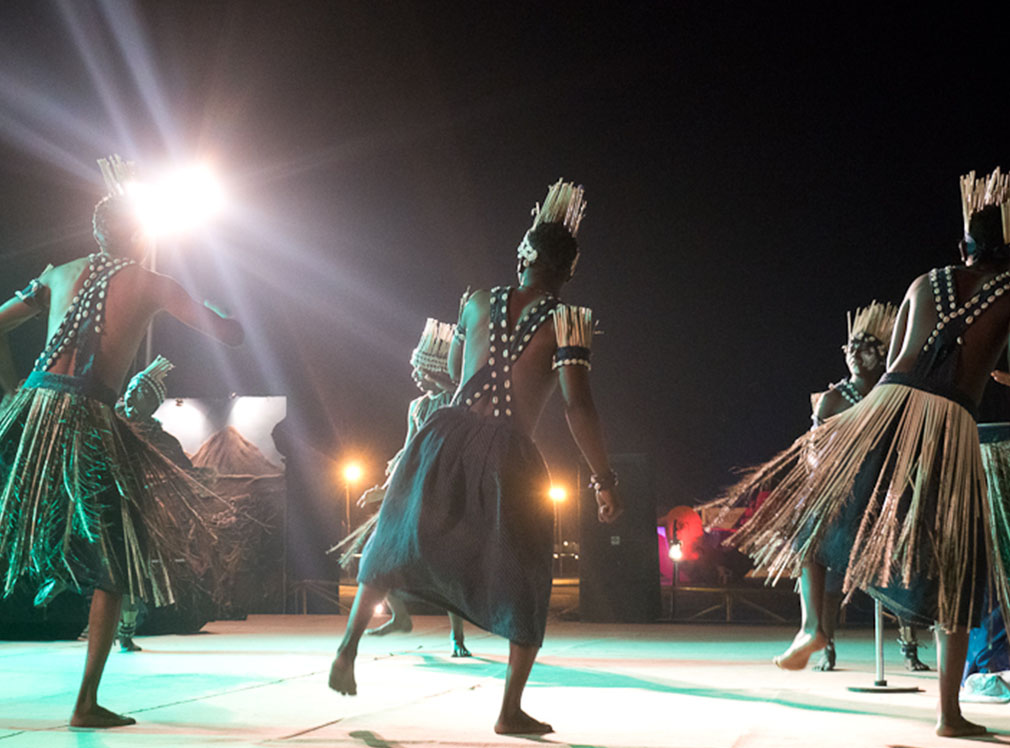Successfully sent!
Thank you for your interest in Maruti Suzuki Arena .

While nature might have painted Rann of Kutch in dull beige, the regional tribes make up for it with a variety of colours, transforming the area into one of the most vibrant places in India. As you travel into Kutch, you will encounter endless stretches of dry land, bleached by the sun. Scattered habitation of nomadic tribes - the Rabaris, the Meghwals, the Wadas, the Harijans and many others – gives some relief to the eyes. Their colourful mud houses called bhungas are adorned with elaborate mirror work and paintings on the base. Inside, bright patchwork quilts are spread over the low seating areas, a wonderful contrast with the golden brown of the terrain.
Even though the Rann Utsav in Kutch was the highlight of the ‘Wheels of Wander’ self-driving trails by Maruti Suzuki Alto and Outlook Traveller, there was time to veer off to some other places as well. This boundless cracked land, barren yet beautiful, provides a kaleidoscope of colourful places to visit: for the history buff, the bird lover, the beach fan, the archeology enthusiast, and wildlife lover. If you’re planning a trip to the region, here’s a handy guide on what more you can add to the trip.
Kalo Dungar - The Black Hills
Approximately 100 kilometers ahead of the sparkling White Rann, the terrain changes drastically. The black tarmac winds up to the highest point in Kutch. Kalo Dungar literally translates to ‘Black Hills’. These are also known as magnetic hills, with one point said to have a magnetic effect on the cars passing by. Being approximately 460 meters above sea level, the place provides a bird’s eye view of the Greater Rann of Kutch. Scores of tourists make their way up for the famous ‘sunset point’, from where one can see the sun dip behind layers of hills in the distance.
Another highlight of Kalo Dungar lies in the 400-years-old Dattatreya Temple, which serves free food to travellers. According to a legend, Lord Dattatreya rested on these hills and encountered a pack of hungry jackals to whom he fed his own body. As they tore through his body, it miraculously started regenerating. Till date, the temple priests offer food to jackals every noon and visitors flock the temple to witness this spectacle.
Little Rann of Kutch - A wildlife enthusiast’s delight
The Little Rann of Kutch is a salt marsh located close to the Greater Rann, 130km from Ahmedabad. It is home to a wild ass sanctuary, and an ecologically robust region for endemic and migratory birds. Glimmering mirages in the bright white Little Rann is not an odd encounter. The barren land and the mirages camouflage a variety of birds here. You can find the Greater Hoopoe-Lark, Cream-coloured Courser, Marsh Harrier and even a Steppe Eagle. Sighting the wild ass is easy enough, but getting a glimpse of the endangered MacQueen’s Bustard is a rarity. The sparse water bodies are where some of the birds thrive. Black-winged stilts, spot-billed ducks, Greater and lesser flamingos, Pelicans, Common cranes, Sarus cranes and Demoiselle cranes (during the migratory season) can be seen. Sunsets against the cracked marshland are phenomenal, especially when a flock of pelicans stands silhouetted against the orange sky.
Mandvi - Of beaches and ships
Barely an hour away from Bhuj (56km) is the ancient port town of Mandvi. Here, wooden ships (dhows) are constructed by locals using Malaysian timber. Most of these dhows are seen sailing in Dubai and other ports in the Gulf. Apart from the bustling shipbuilding yard, the small town is known for its clean stretch of beaches, including the Kashivishwanath Beach. Another attraction, especially for heritage lovers, is the majestic Vijay Vilas Palace, famous for its fusion architecture. Built in 1920 as a summer palace for the Royal Kutch family, the building is a stunning showcase of Kutch, Bengal, and Rajasthan influences. Go here to marvel at the stone jaalis, giant domes, spiral staircases, intricate arches and royal furniture. The local market at Mandvi is worth a stroll to see the embroidered fabrics made by local tribes (Ahirs and Rabaris), vibrant bandhni (tie and dye) prints and also Batik work practiced by local artists.
Dholavira - The Harappan treasure
One of the two largest Harappan sites in India, Dholavira brings the pages of history books to life. Seals, copper and gold ornaments, terracotta pottery, urns, tools, and figurines give an insight into the civilization of the Harappan culture. Evolved drainage systems, well laid out lanes, a water system and rainwater harvesting point to the impeccable planning 4500 years ago. The ruins were discovered in 1967, but the process of excavation started in 1990. The site explains the seven stages of civilization from birth to decay and gives great insights into the study of the Indus Valley civilization. A trip to Dholavira is a must for lovers of history to witness the learnings from a lost civilization. Dholavira can be reached by a 250 km drive from Bhuj with occasional sightings of Chinkaras and Nilgai along the way.
These sites around Bhuj offer a glimpse into the many flavours of the region, be it culture, history, nature or wildlife.
Courtesy of Outlook Traveller
Simply add your email address into the box below and click Subscribe. You will be sent an OTP mail to the below entered Email ID.
Thanks for subscribing to The Maruti Suzuki Arena World. We hope that your experience with us is a delightful one.